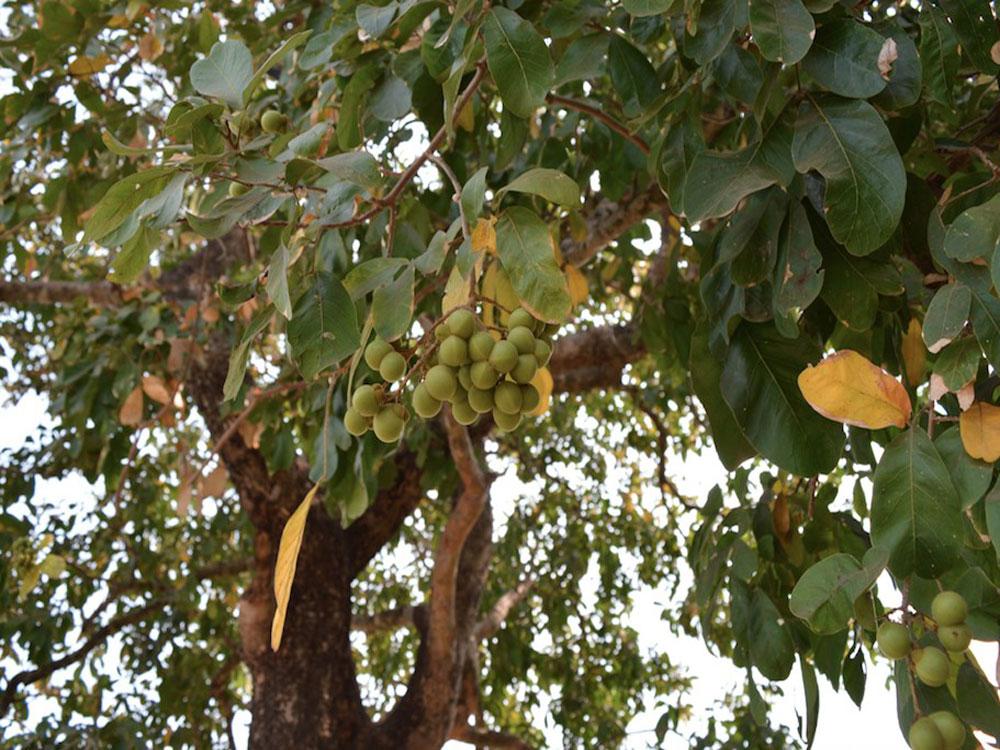Reetha - Soapnut Tree

Sapindus trifoliatus
Summary
Scientific Classification
Kingdom: Plantae
Division: Angiosperm
Class: Dicotyledonae
Order: Sapindales
Family: Sapindaceae
Genus: Sapindus
Species: S.trifoliatus
Scientific Name: Sapindus trifoliatus L.
Common Names:
English: Soapnut tree.
Hindi: Reetha.
Marathi: Ritha.
Description:
- Habit & habitat: A tree, dry deciduous forests and margins of grasslands.
- Distribution: State - Kerala, District/s: Palakkad, Idukki, And Malappuram.
- Morphology:
Leaf compound, 15-30 cm long. Leaflets are nearly stalkless, 2-3 pairs, 8-18 cm long, 5-7.5 cm broad, elliptic-lanceshaped, Smooth, pointed tipped, base slightly oblique, terminal pair longest.
Inflorescence: In terminal and Axillary panicles.
Flower: Flowers are greenish-white, in terminal, slightly velvety panicles. Flower stalks are 3 mm long, velvety. Sepals are 5, slightly fused at the base, 4-5 mm long, ovate-oblong, velvety. Petals are 5, free, 5-6 mm long, lance-shaped to ovate, clawed, bristly. Disc is 5-lobed.
Androecium: Stamens are 8, free, filaments 2-3 mm long.
Gynoecium: Ovary is 3-locular, 3-lobed, ovoid, about 3 mm long, velvety, with 1 ovule in each locule.
Fruit: Fruit is 2-3 lobed, 1.3-2 cm long, velvety when young, hard and smooth when mature. Each cell has a 6-9 mm black, round seed, which is popular as a traditional washing soap.
Flowering and fruiting: November-March.
Seed: seeds black, globose, smooth. - Propagation: Seed and Greenwood cuttings.
- Importance:
Fruits are used as a substitute for soap, especially for washing clothes. Root-bark and fruit given internally as emetic, tonic, anthelmintic, alexipharmic, purgative, nauseant and as errhine, used in epilepsy, asthma, hysteria and hemicrania; Fruit is used in leprosy, pruritus, boils and as abortifacient. - Location:
 Trees of Empress Botanical Garden - Project supported by
Trees of Empress Botanical Garden - Project supported by